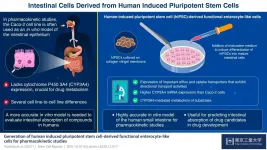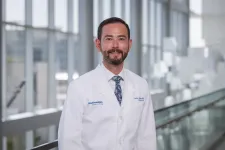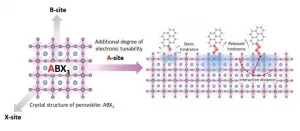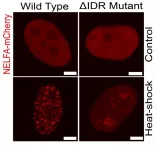(Press-News.org) Cases of symptomatic COVID-19 were extremely low among children and staff at a network of YMCA summer camps held last year in North Carolina that took precautions like masking and physical distancing, with close to zero transmissions occurring at the camps, according to researchers at Duke Health, Weill Cornell Medicine and NewYork-Presbyterian.
In the camps' 2020 sessions, there were 19 cases of COVID-19 among 5,344 staff and 1,486 youth, only two of which were linked to possible on-site transmission at a group of YMCA of the Triangle camps, at a time when rates in North Carolina had hit their first peak, according to a study published Feb. 3 in Pediatrics.
"This is part of the growing body of evidence demonstrating that if precautions like masking, distancing and hand washing are taken, coronavirus transmission can be avoidable in congregate settings for children during times of high community incidence," said Dr. Sallie Permar, chair of the Department of Pediatrics at Weill Cornell Medicine, pediatrician-in-chief at NewYork-Presbyterian/Weill Cornell Medical Center and NewYork-Presbyterian Komansky Children's Hospital and a co-senior author of the study. Dr. Permar conducted the study at Duke when she was a member of its faculty; she joined Weill Cornell Medicine and NewYork-Presbyterian in December 2020.
The YMCA of the Triangle day camps are located at 31 sites across six counties in North Carolina, including the cities of Chapel Hill, Durham and Raleigh. The camps committed to opening for the summer of 2020 and were advised on programming and mitigation strategies by a group of pediatricians, including Dr. Permar, who at the time lived in the area."These results suggest that the benefit of in-person programming for supporting youth learning and mental health, particularly in vulnerable populations, outweighs the risk of viral spread," added Dr. Permar, who was recruited as the Nancy C. Paduano Professor of Pediatrics at Weill Cornell Medicine. "This is true not only in a school setting, but in a camp setting where children are engaging in activities like playing outside and at the gym and doing crafts."
The camps implemented daily temperature checks, physical distancing of at least 6 feet, masks at indoor activities and outdoors where participants couldn't remain distanced, frequent hand washing and sanitizing, and site cleaning. They also split campers into cohorts of 10 youth and one staff member and trained staff in COVID-19 protocols. An internal audit in June found over 95 percent compliance with the mask mandate.
To identify potential COVID-19 cases, the camps asked about exposures outside of camp before allowing campers on site. If the camps learned of an infection, they did contact tracing to identify campers or staff who were exposed. Ten youth and 9 staff, or 0.6 percent of 3,030 people at camp sites where the exposures occurred, had infections that were linked to transmission outside the camps. The other two cases, or .07 percent, were potentially connected to exposure at the camps. Widespread testing was not available, which meant asymptomatic cases were not detected. The most common symptoms were fever and cough, and no one was hospitalized.
There was no difference in rates of transmissions between camps held outdoors, camps held indoors and those that offered a hybrid. Campers were an average of 8.5 years old; 66 percent were white and 54 percent were male.
The rate of transmission in the general North Carolina population was significantly higher, at 200 new cases per 10,000 people each a day, or a 2 percent infection rate. In Durham, positive cases among those under age 18 rose from 9 percent to 17 percent of total cases in the population from May to August, indicating increased spread in that demographic.
The low transmission rate contrasted with an overnight camp in Georgia, where 44 percent of campers had symptomatic cases. The camp was reported to lack adherence to masking practices and physical distancing, and allowed indoor singing and shouting while people were unmasked. The camp also didn't require testing immediately prior to camp attendance.
Dr. Permar said YMCA of the Triangle camps should be credited for forming an "academic-community partnership" early on to involve medical personnel and scientists, and ensure precautions were taken.
"They worked hard to stay open and keep campers as safe as possible," Dr. Permar said, "knowing how important these camps are to kids whose parents are essential workers, work multiple jobs and don't have another option for childcare."
INFORMATION:
The modern world is powered by electrical circuitry on a "chip"--the semiconductor chip underpinning computers, cell phones, the internet, and other applications. In the year 2025, humans are expected to be creating 175 zettabytes (175trillion gigabytes) of new data. How can we ensure the security of sensitive data at such a high volume? And how can we address grand-challenge-like problems, from privacy and security to climate change, leveraging this data, especially given the limited capability of current computers?
A promising alternative is emerging quantum communication and computation technologies. For this to happen, however, it will require the widespread ...
Enterocytes, which line the epithelium of the small intestine, are the sites of absorption and metabolism of most orally consumed medications. For this reason, studies on the absorption of novel oral drugs rely on in vitro or animal models to accurately recreate the environment of the small intestine. Currently, scientists widely use the human colon cancer cell line Caco-2 as a model of the intestinal epithelium. However, this has its drawbacks: Caco-2 cells have been derived from the colon; therefore, they more closely resemble the colon than the small intestine. For example, these cells do not express cytochrome P450 3A4 (CYP3A4), a protein critical for drug metabolism that is abundantly expressed in the small intestine. Moreover, Caco-2 ...
Fresno, CA - A recent human study published in the Journal of the American Academy of Dermatology found that consuming grapes protected against ultraviolet (UV) skin damage.1 Study subjects showed increased resistance to sunburn and a reduction in markers of UV damage at the cellular level. 2 Natural components found in grapes known as polyphenols are thought to be responsible for these beneficial effects.
The study, conducted at the University of Alabama, Birmingham and led by principal investigator Craig Elmets, M.D., investigated the impact of consuming whole grape powder - equivalent to 2.25 cups of grapes ...
DALLAS - Feb. 5, 2021 - The COVID-19 pandemic is having a detrimental impact on substance use, mental health, and weight-related health behaviors among people with obesity, according to a new study by researchers at UT Southwestern and the END ...
Health care and education systems are two main pillars of a community's stability. How well and how quickly a community recovers following a natural disaster depends on the resilience of these essential social services.
New research from the Colorado State University Department of Civil and Environmental Engineering, published in Nature Scientific Reports, has found hospitals and schools are interdependent, suggesting their collective recovery must be considered in order to restore a community in the wake of disaster.
Because hospitals and schools are so integral to a community's well-being, Associate Professor Hussam Mahmoud and Ph.D. graduate student Emad Hassan wanted to determine the correlation between them to understand their overall influence on community ...
UCLA materials scientists and colleagues have discovered that perovskites, a class of promising materials that could be used for low-cost, high-performance solar cells and LEDs, have a previously unutilized molecular component that can further tune the electronic property of perovskites.
Named after Russian mineralogist Lev Perovski, perovskite materials have a crystal-lattice structure of inorganic molecules like that of ceramics, along with organic molecules that are interlaced throughout. Up to now, these organic molecules appeared to only serve a structural function and could not directly contribute to perovskites' electronic performance.
Led by UCLA, a new study shows that when the organic molecules ...
Gene expression is a highly regulated process, which involves several steps. These include transcription of DNA instructions into RNA, removal of non-coding segments from the RNA message, and its subsequent translation into proteins. All these steps involve specific molecular machineries responsible for conducting each process with high accuracy. The Galej group, based at EMBL Grenoble, studies the structure and function of the RNA-protein complexes that are involved in the regulation of gene expression.
During transcription, genetic information contained in the DNA is used to create a precursor messenger RNA (pre-mRNA) thanks to the action of an enzyme, RNA Polymerase II. To maintain only the necessary coding segments ...
All life on earth evolved multiple layers and networks of ensuring survival upon catastrophic events. Even cells have their emergency plan: the heat shock response. Triggered by multiple stress stimuli such as heat, toxins, or radiation, this cellular safety program tries to prevent permanent damage to the organism. The response resembles an overall adopted "lockdown" strategy witnessed during the global corona virus pandemic. During a lockdown, only essential activities are permitted and resources were diverted towards measures ensuring minimizing the impact of a pandemic.
Under normal conditions, RNA polymerase II rushes down the DNA. At the correct places, the DNA is transcribed into mRNA, which is then translated into proteins. In a crisis, ...
SARS-CoV-2 mutations similar to those in the B1.1.7 UK variant could arise in cases of chronic infection, where treatment over an extended period can provide the virus multiple opportunities to evolve, say scientists.
Writing in Nature, a team led by Cambridge researchers report how they were able to observe SARS-CoV-2 mutating in the case of an immunocompromised patient treated with convalescent plasma. In particular, they saw the emergence of a key mutation also seen in the new variant that led to the UK being forced once again into strict lockdown, though there is no suggestion that the variant originated from this patient.
Using a synthetic version of the virus Spike protein created in the ...
Scientists at the Francis Crick Institute have found important structural similarities between SARS-CoV-2 and a pangolin coronavirus, suggesting that a pangolin coronavirus could infect humans.
While SARS-CoV-2 is thought to have evolved from a bat coronavirus, its exact evolutionary path is still a mystery. Uncovering its history is challenging as there are likely many undiscovered bat coronaviruses and, due to differences between bat coronaviruses and SARS-CoV-2, it is thought that the virus may have passed to humans via at least one other species.
In their study, published in Nature Communications, the scientists compared the structures of the spike proteins found on ...



